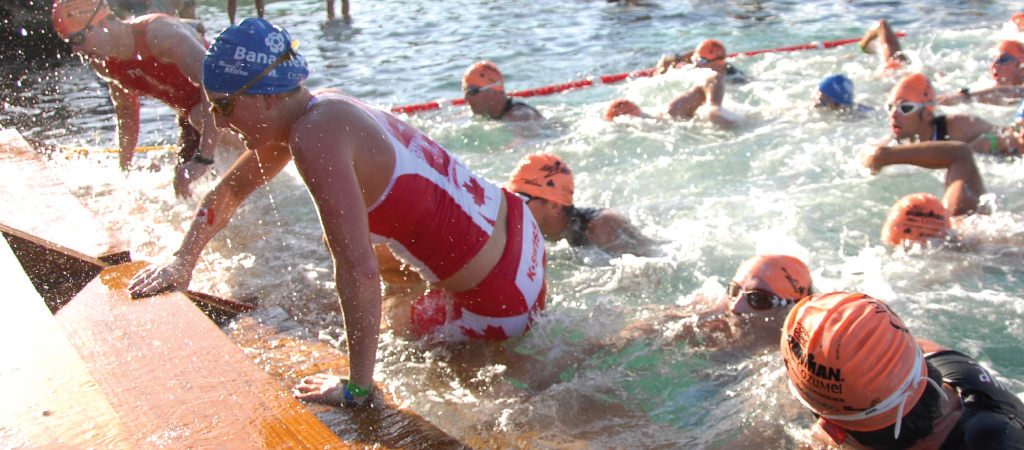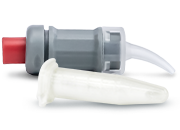
Many people today are striving for life-work balance. Although it may be just a matter of semantics, I prefer to strive for work-life integration. To me, this means doing a job that makes you a better person and doing out-of-work activities that make you more successful professionally. Since my time in dental school, I’ve found that pushing my limits physically, through endurance racing, has been the best way for me to achieve work-life integration.
My passion for endurance sports started when I was 19 years old. I was coaching a Masters swim team and met two women who were turning 50 but didn’t seem a day older than 30. They were training for an Ironman event to celebrate their birthdays and had such optimism for life. I decided if two 50-year-old ladies could run an Ironman race, I certainly could as well.
I swam competitively in high school and mountain biked to work as a teenager. But I’d never trained for a triathlon. I bought a road bike, clocked my hours at the pool, laced up my sneakers, and started training. My first training run was less than a mile. When it was over, I fell into bed, exhausted. But I was determined to reach my Ironman goal.
One year later, in 2006, I finished Ironman Canada. The very next morning, I started my first year of dental school. From the beginning, my endurance racing and practice of dentistry have been intertwined. To date, I’ve competed in nine full distance Ironman events. In 2011, I qualified for and completed the Ironman World Championship in Hawaii. My finish times have never been very fast, but I always say, “Anyone can finish an Ironman event if they want to badly enough.”
I tend to enjoy training for endurance events more than the actual races. Training helps me experience new environments, test different techniques, and push through mental barriers. Training also gives me the time and space for self-reflection. I find all these skills useful in both my professional and personal life.
Most recently, I have been focusing more on ultrarunning events with an ultimate goal of participating in the UTMB (Ultra Trail du Mont-Blanc) event in the Alps—a single-stage mountain ultramarathon of 103 miles (166 km.)
It’s common for triathletes to dislike the swimming portion of a triathlon event. In my experience, the unpredictable water environment makes people uncomfortable with the swim. I live in Canada, where the outdoor swimming season is short, so most of my swim training is done in a pool. The swimming portion of most Ironman races, however, usually takes place in a lake or an ocean.
Under such outdoor conditions, there is no way to control the weather, the presence of wildlife, or the water temperature. Athletes have to quickly adapt to the new environment, in much the same way as children are asked to do when they are referred to a pediatric dentist for treatment.
When adapting to a new environment while either swimming or receiving dental treatment, it is easier to adapt if some components of the experience remain the same. When competing in an Ironman race, I normally do a practice swim a day or two before the event. In the dental setting, this can be equated to giving the child time to get to know the dental clinic and interact with new staff.
I always try to keep in mind that even though I am familiar with the environment in my office, a child coming for a first appointment is walking into a very unfamiliar place. Their only sense of familiarity and security may be provided by their parent or the toy that the child has brought with them. Therefore, I try to interact with both the child and the parent. Even taking time to interact with a stuffed animal brought by a patient will go a long way to helping a child feel at ease.
For example, I remember an event when I was biking through the lava fields on the Big Island of Hawaii. It was extremely hot, and I didn’t think I could finish the race. In order to counteract that negative thinking, I used imagery. I imagined I was a plant and that the sun was giving me energy instead of removing it.
A native of Canada, Dr. Becky is always proud to wear her country’s colors when competing.
Using this imagery technique helped me to turn the heat into something positive. It motivated me to keep going and push through to the finish.
I use a similar technique when giving local anesthetic. I create a storyline that engages children by telling them how the “cold sleepy juice” is going to slow down the super-fast “sugar bugs” so that we can rid their mouths of these little critters. In so doing, we turn what could be the most challenging part of the appointment into an experience that can be more easily tolerated by a young child.
Our pediatric dentistry training includes instruction in utilizing behavioral guidance techniques. These techniques are designed to help children have a positive dental appointment experience. Training for an Ironman race also involves using a lot of similar skills. These techniques include tell-show-do practices, guided imagery, and distraction. I feel that having used many of these skills in race training helps me better utilize them in my practice.
For me, running is moving meditation. I work through the situations of the day and then move on to a heightened state of awareness. In this state, I notice the smallest details of everyday things, such as a blade of grass moving in the wind or the crunch of leaves giving way beneath my running shoes.
Running helps relieve my stress so I don’t take work problems home but still acknowledge and try to learn from them. From a work perspective, these daily moments of reflection help me identify cues that assist me when providing behavioral guidance. For example, when I start to have negative thoughts, my breathing gets shallower. The same is true for my patients. If they are part way through treatment and having difficulty coping, I notice their breathing becomes shallow. This is my cue to start using distraction to help them cope.
I find that it is important for me to incorporate this active self-reflection time into my daily routine by running to and from work. Having an upcoming endurance event such as a marathon, ultra-marathon, or Ironman race on the calendar helps keep me motivated. No matter the weather, I always make time for my running commute.
Endurance sports are both a mental and a physical challenge. For me the mental benefits of pushing my limits far outweigh the physical benefits. As long as I have the desire to complete an event, I know that it is manageable. I try to apply this attitude to all aspects of my life. Maintaining a consistent attitude in both my professional work and personal life helps me achieve my goal of work-life integration.


